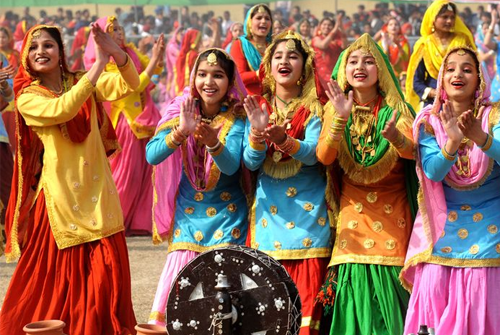Culture of Pakistan
The architecture of the areas now constituting Pakistan can be traced to four distinct periods: pre-Islamic, Islamic, colonial, and post-colonial. With the beginning of the Indus civilization around the middle of the 3rd millennium[2] B.C., an advanced urban culture developed for the first time in the region, with large structural facilities, some of which survive to this day.[3] Mohenjo Daro, Harappa and Kot Diji belong to the pre-Islamic era settlements. The rise of Buddhism, Guptas, Mouryas, and the Persian and Greek influence led to the development of the Greco-Buddhist style, starting from the 1st century CE. The high point of this era was reached with the culmination of the Gandhara style. An example of Buddhist architecture is the ruins of the Buddhist monastery Takht-i-Bahi in Khyber-Pakhtunkhwa.
The arrival of Islam in today's Pakistan introduced the classical Islamic construction techniques into Pakistan's architectural landscape.[4] However, a smooth transition to predominantly picture-less Islamic architecture occurred. The town of Uch Sharif contains the tombs of Bibi Jawindi, Baha'is-Halim, and Jalaluddin Bukhari, which are considered some of the earliest examples of Islamic architecture in Pakistan and are on the UNESCO Tentative World Heritage Site list since 2004.[5] One of the most important of the few examples of the Persian style of architecture is the tomb of the Shah Rukn-i-Alam in Multan. During the Mughal era, design elements of Islamic-Persian architecture were fused with, and often produced playful forms of, local art, resulting in the establishment of Mughal Architecture. Lahore, occasional residence of Mughal rulers, exhibits a multiplicity of important buildings from the empire, among them the Badshahi mosque, the fortress of Lahore with the famous Alamgiri Gate, the colourful, still strongly Mughal-influenced Wazir Khan Mosque as well as numerous other mosques and mausoleums. The Shahjahan Mosque of Thatta in Sindh also originates from the epoch of the Mughals, as does the Mohabbat Khan Mosque in Peshawar.


No comments:
Post a Comment